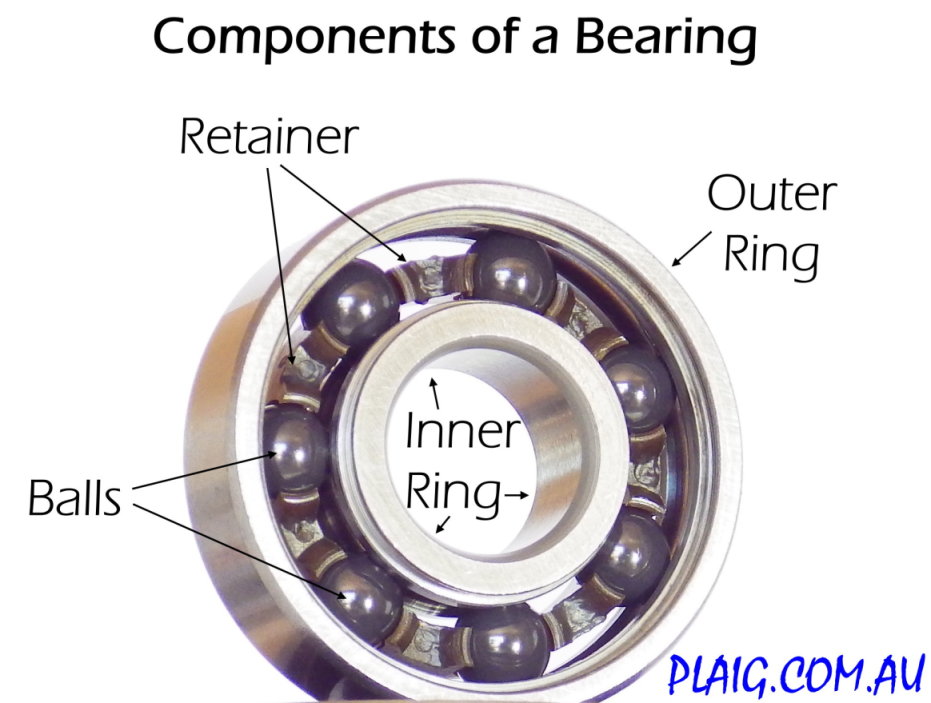Clutch Bell Bearings – Everything you need to know
Why do clutch bell bearings wear faster than wheel bearings?
What forces is a clutch bell bearing enduring?
How often should I change a clutch bell bearing?
All of this and more is explained in detail below:

Difference between wheel bearings and clutch bell bearings:
Wheel / diff bearings operate under different loads to clutch bearings, wheel / diff bearings are housed firmly within the diff / hub. The outer ring does not spin or undergo centrifugal forces. There is very little instantaneous acceleration or stopping, most is gradual compared to a clutch bell. The speed is much lower due to the gear ratio’s.
Calculations based on the RPM / ratios of my own buggy (Tekno NB48.3), have shown that when the engine is Revving at 30,000 RPM the Centre diff and front/rear diff pinions are spinning at 9,772 RPM. The Diff outdrives and wheel bearings are spinning at 2,443 RPM, the car is travelling at approximately 50km/h. The Wheel bearings are spinning at only 8% the speed of the engine / clutch bearings.
A clutch bell bearing is housed within the clutch bell, which spins at different speeds depending on the speed of the car and engine. The outer ring of the bearing and the speed of the clutch bell, are always the same, and are directly in ratio with the speed of the diffs / wheels. If the wheels stop, the bell stops, the clutch disengages and the engine continues to run.
The inner ring of the bearing is spinning directly with the RPM of the engine, when you are accelerating, the bearing is not spinning internally, the balls are stationary because the clutch is engaged. The engine and wheels are accelerating according to the ratio of the diffs etc. When the car stops accelerating (braking for a corner), the clutch disengages and the inner ring of the bearing goes from 0 RPM to the RPM of the engine which is decelerating, but the outer ring is going at the speed of the wheels. It’s a bit to get your head around but imagine how often your clutch bell bearings go from not spinning, to spinning at 30,000+ RPM in an instant, in a simple blip of the throttle the clutch engages, the bearing stops but then it spins up again immediately.
Another thought experiment, your engine is on the starter box warming up, you are revving it up and letting it idle then revving it up over and over, what do you think your clutch bell bearings are doing in this situation?
When the Engine is Accelerating, the bearing is not spinning internally, then you back off without applying the brakes, the bearing goes from stationary, to the wheel RPM minus the engine RPM. Because the outer ring is locked to the bell and the inner ring is locked to the engine, your bearing speed is the difference between these 2. An example is shown below:
Bearing Speed = Wheel RPM – Engine RPM
25,000 = 30,000 – 5,000
(example of revving on a starter box allowing wheels to spin at high speed)
When you apply the brakes and let the engine idle, what is the bearing doing now?
The clutch bell is stationary, so the outer ring is stationary, but the engine is idling so that means the inner ring is spinning, therefore:
When the wheel RPM is less than the engine RPM, the bearing speed is:
Bearing speed = Engine RPM – Wheel RPM.
5,000 = 5,000 – 0
Hopefully that has got you thinking about the extreme conditions that a clutch bell bearing endures during simple operation, but there is more to the story.




